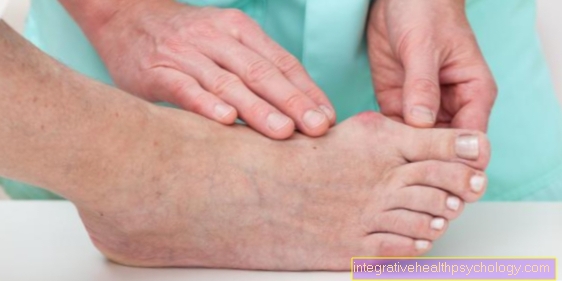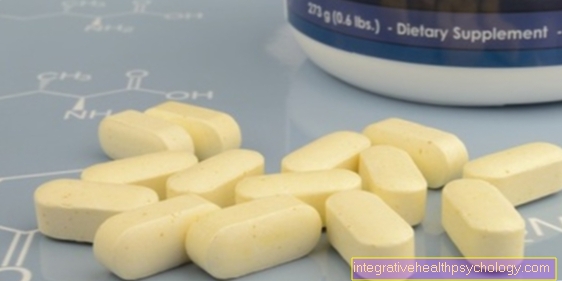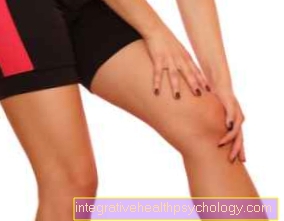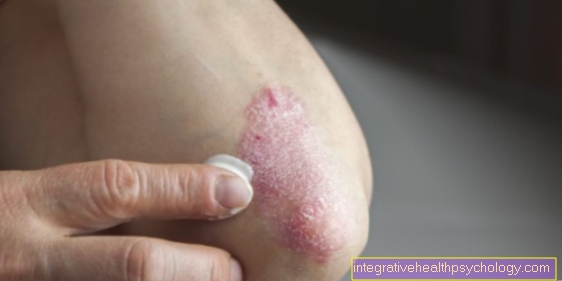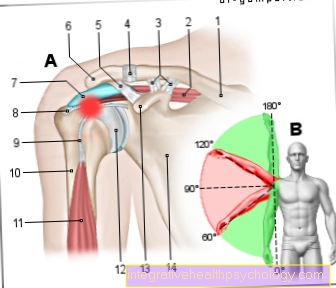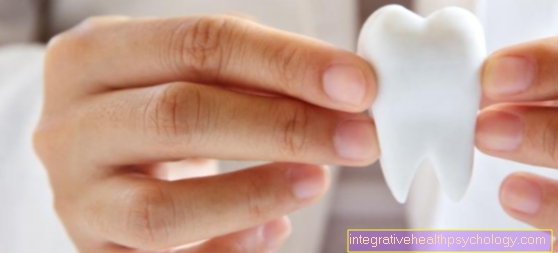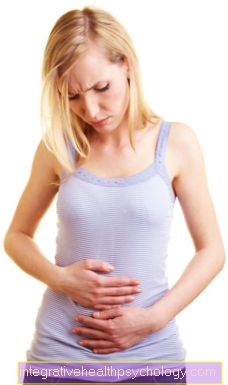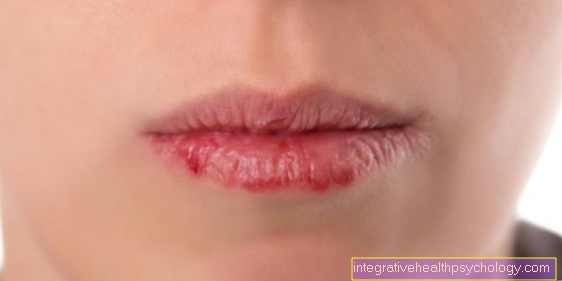Cholestyramine
Colestyramine is an active ingredient that is used to treat hypercholesterolemia. Too high LDL cholesterol levels in the blood can increase the risk of arteriosclerosis and thus heart attacks and similar diseases. Colestyramine binds the bile acids in the intestines and prevents them from being re-absorbed into the body. As a result, the body needs more cholesterol to produce new bile acids and blood levels drop. Colestyramine can be used alone or in combination with statins and other medications.
Read more on the topic: Hypercholesterolemia

Manufacturer frame
Many drugs with the active ingredient colestyramine have the active ingredient name directly in their name. These include Colestyramin-Ratiopharm® or Colestyramin-Hexal®. But the drugs Vasosan®, Quantalan® and Lipocol-merz® chewable tablets also contain colestyramine as an active ingredient. There are both powder for suspensions and chewable tablets. Since other manufacturers keep developing different names for actually the same drug, the preparation can also be changed in the course of a therapy without the therapy changing.
indication
Colestyramine can be used as a supplement to a change in diet and a planned diet to lower cholesterol and thus reduce cardiovascular risk. Colestyramine can also be used for familial hypercholesterolemia, i.e. too high a cholesterol value without being overweight. Colestyramine can also be used, especially if a statin, the most widely used drug for high LDL cholesterol, is not effective enough. Colestyramine can also be used as monotherapy without statin if people with primary hypercholesterolemia cannot tolerate statins or refuse them for other reasons.
Another reason for taking colestyramine is bile acid loss syndrome. Those affected have severe diarrhea due to the loss of bile acids, which are normally absorbed by the body. Colestyramine can help reduce symptoms for those affected. Colestyramine can also be helpful in occluding bile ducts and the associated itching and jaundice. The intake of colestyramine should always be discussed with the treating doctor.
Also read the article on the topic: Diet and cholesterol
Active ingredient / effect
The active ingredient colestyramine is one of the anion exchange resins. Since it is very water-loving, but insoluble in water and cannot ferment, colestyramine cannot be absorbed in the gastrointestinal tract. A chloride is bound in the cholestyramine and this is exactly what is exchanged when it comes into contact with bile acids. The bile acids, which are normally largely taken up again by the intestine, can then no longer be taken up and are excreted with the stool.
The amount of bile acids present in the body decreases and the body tries to produce more bile acids. These bile acids are built from cholesterol and thus cholesterol is used up. This consumption leads on the one hand to lower cholesterol levels and on the other hand to a greater number of receptors for LDL and thus to a lowering of the LDL cholesterol. Exactly this LDL is responsible for the high cardiovascular risk and the lowering can protect against cardiovascular diseases. The colestyramine itself is not absorbed during the process, but is also excreted via the intestine. Therefore it is almost impossible to reach a toxic level.
Find out more about the topic: LDL
side effect
With increasing age and increasing dose, the frequency of side effects increases significantly. Constipation is particularly common, although it is easy to treat for most people and only leads to treatment being discontinued in a few people. In the gastrointestinal tract, diarrhea, fatty stools, vomiting, bleeding, swallowing disorders and intestinal obstruction can also occur. For most of the side effects, no frequencies can be specified.
You might also be interested in this topic: Fat stool
One observed side effect is hemorrhagic diathesis. This is a coagulation disorder with an increased risk of bleeding. Influencing the bile acid uptake can lead to a deficiency in the fat-soluble vitamins A, D, E and K. The vitamin A deficiency can lead to night blindness. Loss of appetite is also possible.
Dizziness, headaches, tiredness and abnormal sensations can also be the result of taking colestyramine. The skin can react with redness and allergic reactions. Osteoporosis and muscle pain, as well as joint pain, are possible side effects. All side effects reported can occur but are for the most part rare events. Those affected should always speak to their doctor about possible side effects.
interaction
Colestyramine reduces the absorption of many substances in the gastrointestinal tract, which can make other drugs taken orally more difficult to absorb. Medicines that are subject to the liver's circulation can also be changed in terms of their effect. Digitoxin is one of them. When discontinuing cholestyramine, toxic doses can occur.
Anticoagulant therapies, for example with Marcumar, must be closely monitored, as these depend on the vitamin K level and vitamin K is poorly absorbed. A reduced effect of the pill cannot be excluded with certainty either.
Effectiveness of the pill
Although cholestyramine is not absorbed directly into the body, a reduced effect of the pill cannot be ruled out. Colestyramine influences the formation of cholesterol and can therefore also lead to hormonal fluctuations in the sex hormones. In addition, the oral absorption of medication, such as the pill, can be impaired. Those affected should therefore also use other forms of contraception.
Cholestyramine and alcohol
A direct interaction between alcohol and cholestyramine is not reported.Possible side effects in the gastrointestinal tract, such as diarrhea, can, however, be more pronounced if alcohol is taken at the same time. With an increase in complaints from alcohol, colestyramine should only be used after a period of time after alcohol consumption. With alcohol abuse, liver damage and damage to the biliary tract can lead to further side effects.
dosage
For colestyramine sachets for suspension, one to four sachets per day are recommended for adults. This can be increased to up to six sachets, i.e. 24g colestyramine. Higher dosages affect normal fat absorption in the intestine. In children, the dosage is adjusted based on body weight and usually starts with one dose. The dose increase is then carried out at regular intervals until the treatment is successful. In the event of interactions, there should be a time lag between taking colestyramine and taking other medications.
price
The base price of colestyramine is around 60 to 80 cents per bag. A pack of 100 bags costs around 70 euros. The costs are usually covered by the health insurance companies.
Is there cholestyramine available without a prescription?
In Germany, colestyramine is only available from pharmacies and requires a prescription. Therefore, you cannot buy colestyramine without a prescription from your doctor. Even if relatives or friends have this drug at home, those affected should not take it without consulting their doctor, as the side effects and interactions must be weighed individually. Since, in many cases, the cholesterol levels drop with a change in diet, drug therapy is often not necessary.
Alternatives to colestyramine
The most important alternative to treatment with colestyramine is to change your diet. Often the cholesterol values can already be lowered well with low-fat meals and a Mediterranean diet. Exercise and weight loss can also be successful. A direct relative of colestyramine is colestipol.
This also works through the exchange of bile acids and the reduced absorption in the intestine. Statins are a commonly prescribed group of drugs. These inhibit an enzyme in the cholesterol production chain and thus lower the blood level. Lowering triglycerides with drugs can also reduce the risk of cardiovascular disease.
Further information on the subject can be found at: Foods and cholesterol
Use during pregnancy and breastfeeding
Particularly in combination therapy with statins, the intake of colestyramine leads to a reduced absorption of fat-soluble vitamins. A vitamin K deficiency during pregnancy can lead to bleeding in the unborn child, especially in the brain, and should therefore only be given if absolutely necessary.
It is important to ensure that there is an adequate supply of fat-soluble vitamins. Colestyramine is not absorbed into the body and therefore cannot pass into breast milk, but here too the vitamin deficiency can cause damage in the infant.
Recommendations from the editorial team
- Hypercholesterolemia
- Hyperlipidemia
- Diet and cholesterol
- Foods and cholesterol
Exclusion of liability / disclaimer
We would like to point out that medication must never be discontinued, applied or changed independently without consulting your doctor.
Please note that we cannot claim that our texts are complete or correct. The information may be out of date due to current developments.





